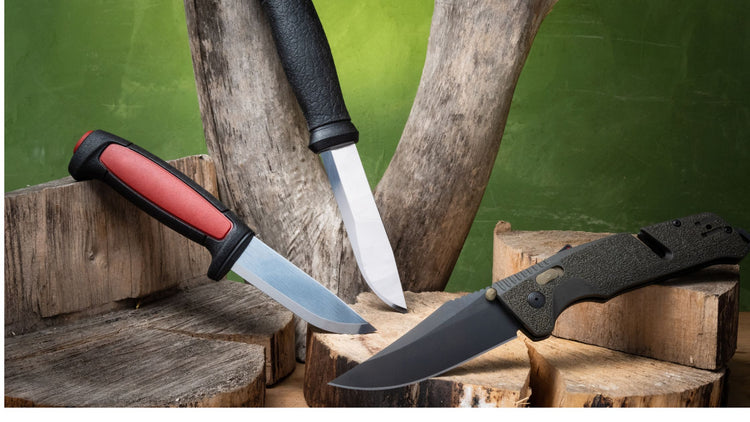For kitchen professionals, Understanding blade grinds is crucial to mastering the art of cooking. A sharp knife is more than just a tool; it’s an extension of the chef’s hand. The type of grind on a knife blade can significantly affect cutting performance, ease of use, and maintenance. In this article, we’ll explore various blade grinds, their applications, and how they impact your culinary skills.

What is a Blade Grind?
A blade grind refers to the specific shape of a knife’s cross-section. It dictates how the knife cuts, its strength, and its ease of sharpening. Each grind type offers unique benefits, making it important for chefs to choose the right one for their needs.
Why Blade Grinds Matter in the Kitchen
In the kitchen, a well-ground blade can make all the difference. Whether you’re slicing vegetables or carving meat, the right blade grind ensures precision and efficiency. It also affects how often you’ll need to sharpen your knives, which is crucial for maintaining their longevity.
Types of Blade Grinds
1. Flat Grind
The flat grind is a versatile choice for many kitchen knives. It features a consistent, straight taper from the spine to the edge, offering excellent cutting performance and easy maintenance. This grind is ideal for chefs who value a balance between sharpness and durability.
2. Hollow Grind
The hollow grind creates a concave shape on the blade, resulting in a razor-sharp edge. It’s perfect for slicing and fine cutting tasks, but it requires more frequent sharpening. This grind is popular among chefs who prioritize precision over durability.
3. Convex Grind
The convex grind is known for its strength and durability. It features a curved taper, allowing for greater edge retention. This grind is favored by chefs who need a robust knife for heavy-duty tasks like chopping bones or tough vegetables.
4. Scandi Grind
The Scandi grind, also known as the Scandinavian grind, is characterized by a single, wide bevel. It’s easy to sharpen and ideal for filleting fish or slicing delicate foods. Chefs appreciate its simplicity and effectiveness in precision tasks.
5. Chisel Grind
The chisel grind has a flat edge on one side and a beveled edge on the other. It’s commonly used in Japanese kitchen knives and excels at producing thin, even slices. However, it requires careful maintenance to prevent chipping.
Choosing the Right Grind for Your Needs
Selecting the perfect blade grind depends on your culinary style and the tasks you perform most frequently. Consider factors such as ease of sharpening, edge durability, and cutting efficiency when making your choice.
Maintaining Your Knife’s Edge
Regular maintenance is essential for preserving the performance of your knife’s grind. Proper honing and sharpening techniques can extend the life of your blades. For more detailed instructions, check out our guide on edge retention techniques.
Common Mistakes in Blade Grind Maintenance
Avoiding common errors in knife care is crucial for maintaining your blade’s performance. Over-sharpening, using the wrong sharpening tools, and neglecting regular maintenance can all shorten the life of your knives.
Expert Tips for Maintaining Blade Grinds
To ensure your knives remain in peak condition, follow these expert tips: regularly hone your knives, use sharpening stones appropriate for your grind type, and clean your knives thoroughly after each use.
The Impact of Blade Material on Grinds
The material of your knife blade can influence the effectiveness of different grinds. High-carbon steel, for example, holds a sharp edge longer, making it suitable for flat and convex grinds. Stainless steel, while more resistant to rust, may require more frequent sharpening.
Understanding Blade Angles
The angle at which a knife is ground affects its sharpness and durability. A shallow angle produces a sharper edge, while a steeper angle offers more strength. Chefs should consider their specific needs when choosing a blade angle.
Advanced Techniques for Re-Profiling Blades
For chefs looking to customize their knives, re-profiling the blade is an option. This involves reshaping the grind to suit specific cutting tasks. Our detailed article on re-profiling methods provides insights into this advanced technique.
How to Test Your Knife’s Sharpness
To ensure your knife is performing optimally, regular sharpness tests are recommended. Simple methods like the paper test or tomato slicing test can help you gauge your knife’s sharpness.
Conclusion
In the world of culinary arts, Understanding blade grinds is essential for kitchen professionals. The right grind can enhance your cooking skills, improve efficiency, and extend the life of your knives. By choosing the appropriate grind and maintaining it properly, chefs can achieve culinary excellence.

FAQ Section
1. What is the best blade grind for general kitchen use?
The flat grind is often recommended for general kitchen use due to its balance of sharpness and durability.
2. How often should I sharpen my kitchen knives?
Sharpening frequency depends on usage, but generally, kitchen knives should be sharpened every few months to maintain their edge.
3. Can I change the grind on my existing kitchen knife?
Yes, re-profiling can change the grind on your knife. For guidance, refer to our article on re-profiling methods.
For more information on different types of knife blades, you can visit this external resource.
This article contains affiliate links. We may earn a commission at no extra cost to you.


